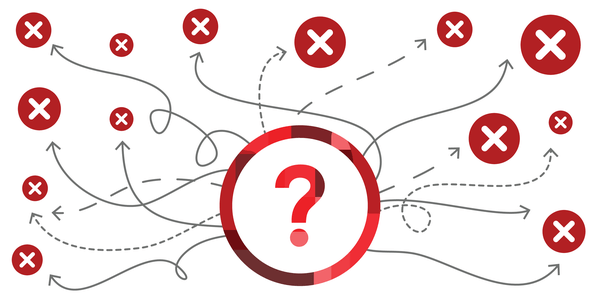EXECUTION
Escape Analysis Paralysis with ONE Decision

In case you haven’t heard, building and growing a business is quite complex.
It requires people, all of which have different perspectives, personalities, strengths, skills, motivations, etc. and all of whom must be in alignment in order for the company to grow.
It requires systems to meet the growth goals of the business, all of which must be built, tested and documented.
Lastly, it requires cash to support the people and run the systems.
The catch? Just because you have people, systems, and cash doesn’t guarantee a business will grow. You have to make informed decisions that involve a mix of all three, which is where many businesses and teams get stuck.
Research states that the average adult makes over 35,000 decisions a day. As a business owner, hundreds or even thousands of those decisions revolve around moving your business forward.
This underscores one of the key differences between businesses that scale well and efficiently versus businesses that don’t – knowing WHICH decisions to make and WHEN to make them.
Enter analysis paralysis.
A typical decision starts with an individual using basic logic, experience and/or specific data to determine a potential course of action. The resulting analysis should provide a clear path to an answer, solution or at least a pros and cons list that reveals the most favorable options.
But when we are faced with unfamiliar circumstances analysis paralysis often sets in from:
trying to weigh an undefined number of variables
having entirely too much data to process
allowing too many individual perspectives into the decision-making process (aka too many cooks in the kitchen)
So… how does one escape analysis paralysis?
Begin with ONE decision.
The commitment to create a process for working through decisions.
This one decision will save you hours of time and frustration. It will also give your team the framework for successfully making decisions in the future without you.
I always recommend that my clients strengthen their decision-making process by establishing key metrics. This is a critical tool for sorting through the overabundance of data, information, and technology that can overwhelm the process. Key metrics help peel away the irrelevant “noise” and get everyone focused on what matters most in getting to a decision.
One other piece of advice… at the beginning of the meeting, frame what decision(s) must be made. There may be debate and disagreement. Great. Just be sure to agree to leave analysis paralysis at the door and COMMIT to making a decision before you leave the meeting.
Want help setting your business’ key metrics?
Schedule a 90-minute coaching call with me.
You may also like…

BLOG | CUSTOMER
How Family Businesses Can Navigate Post-COVID Challenges
“In quiet and untroubled times, it seems to every administrator that it is only by his efforts that the whole population under his rule is kept going..."
Read More
BLOG | FAMILY DYNAMICS / GOVERNANCE
Becoming a Family Business: This Firm Lives What They Teach
You may know the man in the photo as Tom Garrity, Founder of Compass Point, a family business consulting firm in Southeastern PA, headquartered in the Lehigh Valley; I know him as my inspiration, mentor, confidante, tennis partner, and best of all – my dad. This blog marks...
Read More
BLOG | LEADERSHIP
Cracking The Culture Code for Business and Leadership Strategy
Discover how business and leadership intersect in Daniel Coyle's "The Culture Code," offering insights into building successful organizations. I recently asked the LinkedIn community what book most closely aligns with your leadership identity...
Read MoreWhere Family Businesses Come to Grow & Learn
At Compass Point, we make it easy to get insights, training, tools, and articles straight to your inbox and help family business owners and their team continue to grow, learn, and lead.


